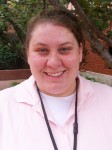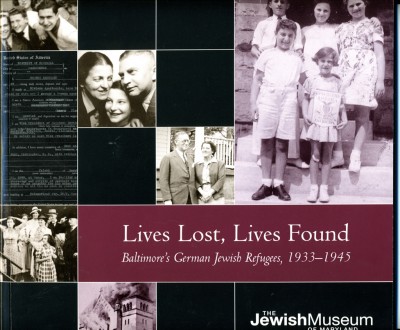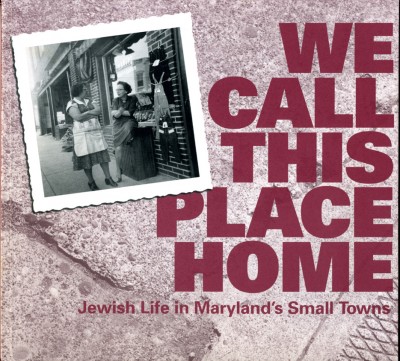Lunch Room Conversations

A blog post by Development Intern Adrienne Yoe.
 This summer, I’ve had the pleasure of working at the Jewish Museum of Maryland as the development intern! As the days left in my internship begin to whittle down, I’ve begun to prepare my curriculum for the Hebrew school, where I’ll be teaching this fall and also reflect on the myriad of things that I’ve learned since coming to the museum. One such thing is: chatting with colleagues in the lunch room can set of light bulbs, especially if they work in a totally different field.
This summer, I’ve had the pleasure of working at the Jewish Museum of Maryland as the development intern! As the days left in my internship begin to whittle down, I’ve begun to prepare my curriculum for the Hebrew school, where I’ll be teaching this fall and also reflect on the myriad of things that I’ve learned since coming to the museum. One such thing is: chatting with colleagues in the lunch room can set of light bulbs, especially if they work in a totally different field.
During a lunch-time conversation with Karen Falk, curator extraordinaire, I mentioned my upcoming job as a Hebrew school teacher at a congregation in Columbia, Maryland. I told Karen how excited I was that two of the sub-topics I’ve been tasked with teaching—the history of pre-World War Two German refugees who came to America, and the history of small-town Jews, were previously exhibits in the museum! How great was it to have these resources at my fingertips.
 While I have very little insight about German refugees who fled to America in the 1930’s, being a small town Jew is something that I’m quite familiar with. I’m from a small town in Maine, and when my husband and I go back to visit, his kippah turns more than a few heads. For high school I attended a boarding school in a small town in Massachusetts, where the number of Jewish could be counted on one hand. I found myself comforted and inspired when I read the book, “The Jew Store,” by Stella Suberman – at least I didn’t have to worry that every pastry I consumed might be laced with lard! The book begins in the 1920’s, when the Bronson family moves from New York City, a bastion of all things Jewish, to Union City, Tennessee, to open up a dry-goods store. The Bronson’s were their town’s only Jews, and Suberman keeps the reader spellbound as she describes her family’s triumphs and challenges in fitting into their small town while maintaining a separate Jewish identity.
While I have very little insight about German refugees who fled to America in the 1930’s, being a small town Jew is something that I’m quite familiar with. I’m from a small town in Maine, and when my husband and I go back to visit, his kippah turns more than a few heads. For high school I attended a boarding school in a small town in Massachusetts, where the number of Jewish could be counted on one hand. I found myself comforted and inspired when I read the book, “The Jew Store,” by Stella Suberman – at least I didn’t have to worry that every pastry I consumed might be laced with lard! The book begins in the 1920’s, when the Bronson family moves from New York City, a bastion of all things Jewish, to Union City, Tennessee, to open up a dry-goods store. The Bronson’s were their town’s only Jews, and Suberman keeps the reader spellbound as she describes her family’s triumphs and challenges in fitting into their small town while maintaining a separate Jewish identity.
 Upon hearing the topics I was planning to teach, Karen offered the following insight: “They [small-town Jews] were the pioneers for the types of Jews we are today,” said Karen. I was somewhat perplexed— most Jews today have chosen to settle in the suburbs and trendy urban areas (or urban areas that are about to become trendy).
Upon hearing the topics I was planning to teach, Karen offered the following insight: “They [small-town Jews] were the pioneers for the types of Jews we are today,” said Karen. I was somewhat perplexed— most Jews today have chosen to settle in the suburbs and trendy urban areas (or urban areas that are about to become trendy).
Karen went on to explain that prior to Jewish migration to the suburbs, Jews in American primarily lived in large cities, such as New York, in almost entirely Jewish areas. They could step outside and everything and everyone was Jewish. Even if a Jew didn’t do anything actively Jewish, such as attending a synagogue or being part of Jewish educational programs, he was surrounded by Judaism. However, in small towns, Jews were forced to actively maintain their Jewishness, through self-education, forming synagogues, and participating in (or leading) Jewish rituals. Today’s Jews Diaspora Jews, the majority of whom do not live in all-Jewish neighborhoods, are also responsible for maintaining their Jewish identity and passing it along to their children. Empowering education is what keeps people Jewish, and understanding how past small-town Jews maintained their identity while becoming American can guide anyone (Jewish or non) who wants to be an active participant in American life, while maintaining a separate ethnic or religious identity. I’m hoping that my students this fall will be inspired from the experience of Maryland’s small-town Jews, which was so beautifully documented by the JMM, to challenge themselves to remain uniquely Jewish and proudly American.
To learn more about “The Jew Store” by Stella Suberman, check out the following links:
